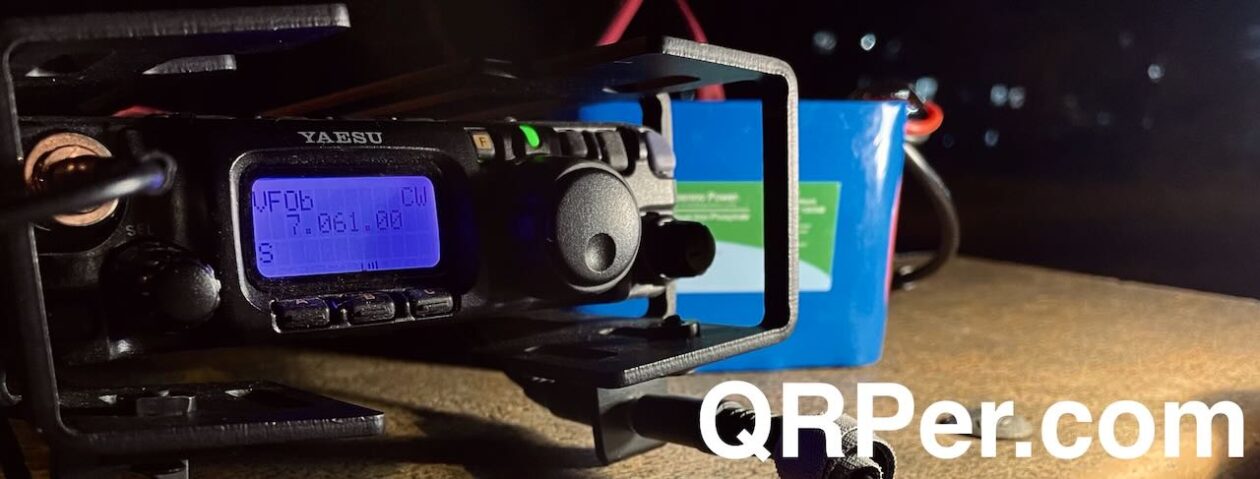The following article originally appeared in the November 2022 issue of The Spectrum Monitor magazine:
A Review of the LnR Precision Mountain Topper MTR-4B V2
by Thomas (K4SWL)
I confess, there is something that I’ve come to believe is almost a rite of passage in the SOTA (Summits On The Air) community. And, no, I’m not talking about activating an All Time New One (ATNO) summit, or completing a particularly challenging activation on a snow-capped peak.
I’m talking about owning one of the iterations of the amazing “Mountain Topper” pocket-sized QRP CW transceivers designed by Steve Weber (KD1JV).
This little radio first caught my attention at a Four Days In May (FDIM) QRP conference over a decade ago: a ham friend in the SOTA community proudly showed me a very early version of the Mountain Topper that he built from a kit. The first thing that struck me was how impossibly small and extraordinarily lightweight it was. But when he showed me the 9-volt battery he used to power it––a power supply not only small, but convenient––I was mesmerized.
Over the years, the Mountain Topper has evolved. There have been many models, ranging from two bands to five. To my knowledge, they’re no longer offered in kit form, but LnR Precision manufactures and tests these in North Carolina, and they’re better than ever in terms of features and performance.
At present, the MTR-4B V2––the second version of the four-band Mountain Topper––is the only model in production, and if you’re hoping to acquire one, due to supply chain issues (at time of publishing) there’s a rather long wait time. They retail new for $350 US, and frankly, the used ones I’ve seen posted in ham radio classifieds ads have been equal to, or even over, the listed price for a new rig. Obviously, demand for these radios is much higher than supply.
So, how could it be that this minuscule QRP radio performs well enough to produce some serious DX from a remote summit…so well, in fact, that people are willing to wait in line for one?
Magic or method?
 As any CW operator will tell you, the magic is in the mode. CW is such an efficacious mode that it cuts through the ether like a knife, even when conditions are less than favorable.
As any CW operator will tell you, the magic is in the mode. CW is such an efficacious mode that it cuts through the ether like a knife, even when conditions are less than favorable.
Obviously, pint-size radios like the Mountain Topper are QRP––low power––so designing them around such a simple mode is a very smart choice. CW transceivers are much less complex than a similar SSB transceiver, thus have less components, less mass, and are in general more affordable (when compared to those with similar receiver performance).

In addition, the Mountain Topper is designed with the field activator in mind: specifically, SOTA activators, but of course, POTA (Parks On The Air), WWFF (World Wide Flora and Fauna), IOTA (Islands On The Air), or any other popular “-OTA” field activity. As a field activator in one of these programs, you are the DX. This means chasers and hunters are actively seeking your signal, and thus you are not competing with blowtorch stations to punch through a pileup.
I can also assure you that standing on a tall summit also gives you a brilliant starting point for your QRP signal. Some of the best DX I’ve ever worked has been from a summit.
So, for the average CW SOTA activator, QRP is preferred because QRO simply isn’t necessary––indeed, in my opinion it’s a bit of an overkill. At least that’s been my experience now with my few hundred SOTA, POTA, NPOTA, SOTA, and even one Lighthouse On The Air activations.
So this brings us back to the wee Mountain Topper series and the model being reviewed here in the pages of TSM: The Mountain Topper MTR-4B. Continue reading A review of the LnR Precision Mountain Topper MTR-4B ultra-portable QRP transceiver



































